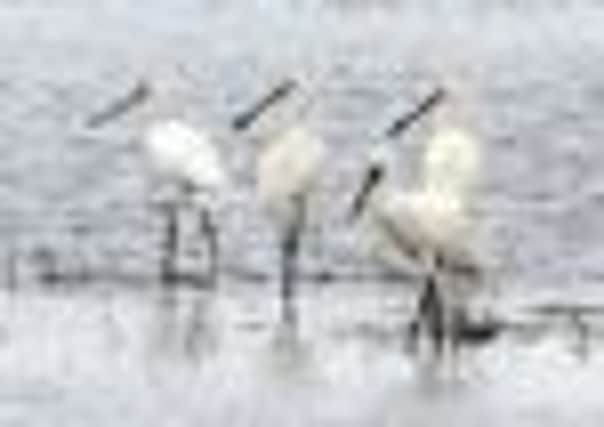Birdwatch: High hopes for the returning spoonbill


Four of them are in Yorkshire at the moment, two at the RSPB’s Blacktoft Sands reserve, in East Yorkshire, and two at the society’s Fairburn Ings reserve, near Castleford.
A spoonbill can be a very frustrating bird to see properly as it spends long periods asleep with its head tucked under a wing.
Advertisement
Hide AdAdvertisement
Hide AdBut I had excellent views of the two Fairburn birds last week, wide awake and busily feeding with those incongruous bills sweeping to and fro in the shallow water snapping up small fish and other aquatic creatures.
I was also able to fully appreciate their long, elegant black legs, the wispy head plumes on one of them, and pure white plumage apart from the faintest touch of ochre across the breast.
These are exciting times for everyone who admires spoonbills as they seem poised to return as a regularly breeding bird following the success of their relative, the little egret.
Spoonbills were once widespread in this country but the draining of marshes – and being targeted by hunters – resulted in their disappearance by 1668.
Advertisement
Hide AdAdvertisement
Hide AdBut increased protection and a rapid increase of the Dutch population resulted in more young spoonbills crossing the North Sea to prospect for nest sites here and, after several attempts in the 1990s, the first confirmed breeding here for 300 years took place in Lancashire in 1999, when a pair reared two young on the Ribble estuary.
In 2008, a pair reared three young in Dumfries and Galloway and another pair bred successfully in Scotland last year.
But the most exciting development of all came in Norfolk last year when a spoonbill colony of at least four nesting pairs moved onto the Holkham National Nature Reserve among a mixed colony of cormorants, grey herons and little egrets – and fledged 10 young.
Since then, family groups of adult and young spoonbills have been seen along the Norfolk, Sussex and Lincolnshire coasts, and news of more breeding pairs seems likely before long.
Advertisement
Hide AdAdvertisement
Hide AdMeanwhile, the Dutch population has reached an incredible 2,332 pairs this year, making the arrival of more young spoonbills here looking for nest sites a virtual certainty.
As well as the spoonbill and little egret, cattle egrets are also starting to breed here, and the great white egret is also likely to breed here soon.
Thirteen little egrets were seen at Beacon Ponds, on the Holderness coast, while there are two at Fairburn Ings. A juvenile cattle egret paid a brief visit to Astley Lake, Swillington Ings, on Saturday and is likely to still be somewhere in the area.
A common crane and a black redstart were among the birds seen at the Nosterfield Nature reserve, North Yorkshire.
Advertisement
Hide AdAdvertisement
Hide AdMore waders are starting to be seen on passage south through the region, many still in full breeding plumage and there has been a good selection seen from the Ousefleet hide, at Blacktoft Sands, including spotted redshanks, green sandpipers, black-tailed godwits and a wood sandpiper.
The first young marsh harriers are taking to the air over the reserve, while, after a very hard winter for them, the first family groups of bearded tits are starting to be seen.
A walk to try to see them starts tomorrow morning from the visitor centre at 8am. To book, e-mail blacktoft.sands @rspb.org.uk